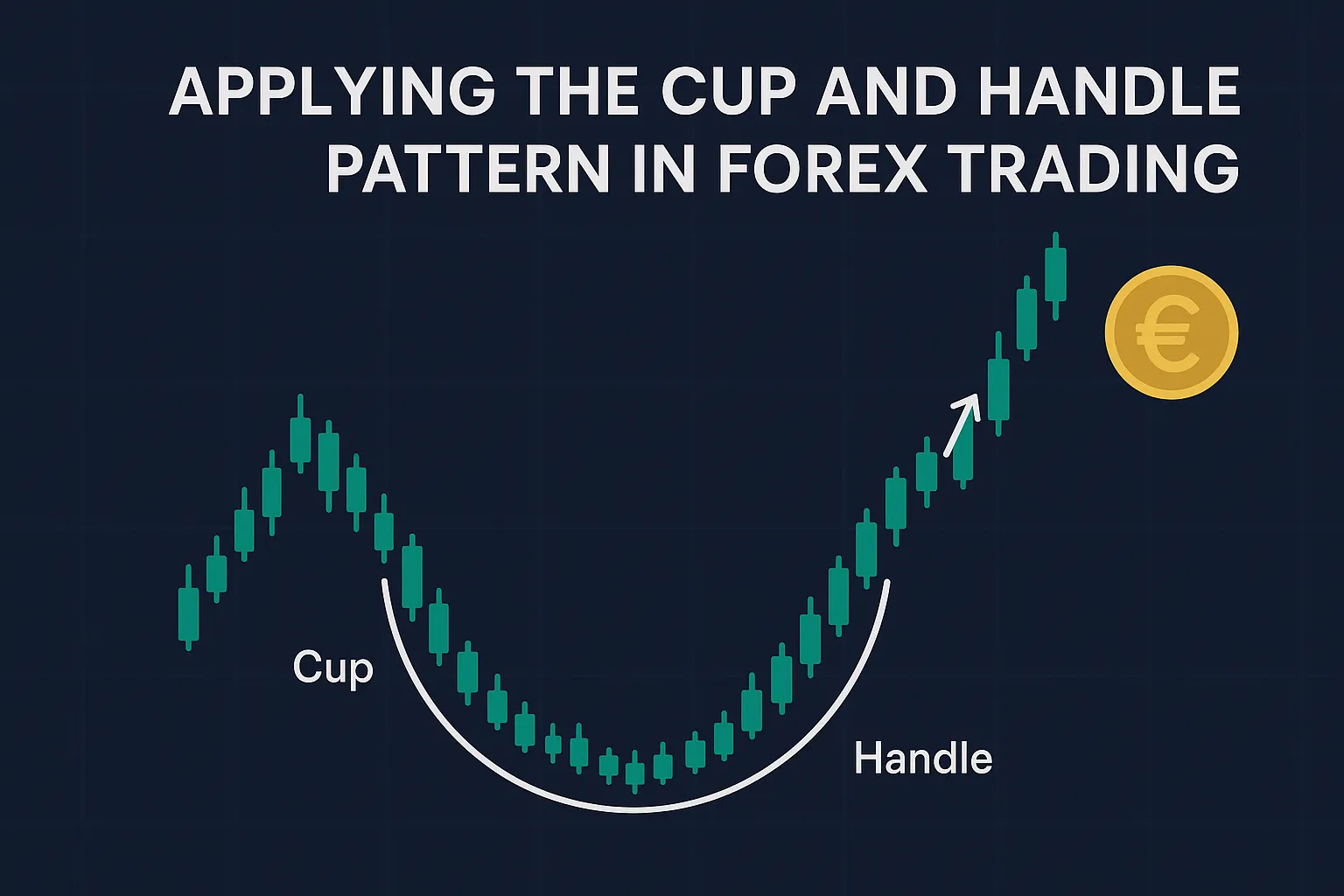
Introduction
The cup and handle in forex trading is a powerful chart pattern for spotting bullish opportunities in currency pairs. This pattern helps forex traders identify potential price breakouts, making it a valuable tool in volatile markets. Whether you’re trading major pairs like EUR/USD or exotics, understanding how to apply the cup and handle pattern can enhance your trading strategy. This guide provides practical steps and tips for using the cup and handle pattern in forex trading to achieve consistent results.
What is the Cup and Handle Pattern?
The cup and handle pattern is a bullish continuation chart pattern that forms after a price uptrend. It consists of:
- Cup: A U-shaped consolidation, resembling a bowl, lasting 1–6 months.
- Handle: A short, downward-sloping pullback, lasting 1–4 weeks.
In forex trading, the pattern signals a breakout when the price closes above the handle’s resistance with high volume or strong momentum, indicating a likely continuation of the uptrend. It’s effective across various time frames, from daily to weekly charts.
Why Use the Cup and Handle in Forex Trading?
The cup and handle pattern is well-suited for forex trading because it:
- Captures Breakouts: Identifies strong momentum shifts in currency pairs.
- Adapts to Volatility: Works in forex’s fast-moving markets, especially for major pairs.
- Provides Clear Signals: Offers precise entry and exit points for disciplined trading.
This pattern is particularly effective in trending forex markets, helping traders ride bullish waves.
How to Apply the Cup and Handle Pattern in Forex Trading
Follow these steps to trade the cup and handle pattern in forex markets:
1. Identify the Pattern on Forex Charts
- Look for a prior uptrend in a currency pair (e.g., 100–200 pips rise for EUR/USD on a daily chart).
- Confirm a U-shaped cup (20–30% depth, 1–6 months) and a handle (30–50% retracement, 1–4 weeks).
- Example: EUR/USD rises from 1.1000 to 1.1300, dips to 1.1100 (cup), returns to 1.1300, and pulls back to 1.1250 (handle).
2. Confirm with Volume or Momentum
- In forex, volume data may be limited, so use tick volume or momentum indicators like RSI or MACD.
- Ensure low tick volume in the handle and a surge on breakout above the handle’s resistance (1.1300 in the example).
- Check RSI (40–60 during handle, below 70 on breakout) or MACD (bullish crossover) for confirmation.
3. Time Your Entry
- Enter after the price closes above the handle’s resistance with strong momentum (e.g., buy above 1.1300).
- Alternatively, enter on a low-volume pullback to the breakout level for lower risk.
- Use higher time frames (e.g., daily or 4-hour charts) to filter out noise in forex markets.
4. Set Price Targets and Stop-Loss
- Calculate the target by adding the cup’s depth (300 pips in the example) to the breakout point (1.1300 + 0.0300 = 1.1600).
- Place a stop-loss below the handle’s low (1.1240) to limit losses.
- Aim for a risk-reward ratio of at least 2:1 (e.g., 300-pip gain vs. 100-pip risk).
5. Monitor Market Conditions
- Trade in trending markets, avoiding major economic events (e.g., central bank announcements) that can disrupt forex patterns.
- Check correlated pairs (e.g., EUR/USD and USD/CHF) to confirm broader market sentiment.
- Use platforms like MetaTrader or TradingView for real-time analysis.
Common Mistakes in Forex Trading with the Cup and Handle
- Ignoring Volatility: Forex markets are volatile, so use tighter stops to manage rapid swings.
- Relying Solely on Price: Without momentum indicators, false breakouts are common.
- Trading Low-Liquidity Pairs: Stick to major pairs like EUR/USD or USD/JPY for reliable patterns.
Tools and Resources
Enhance your forex trading with these resources:
- TradingView: Analyze forex charts and set breakout alerts. Visit TradingView.
- BabyPips: Learn forex trading strategies and chart patterns. Explore BabyPips.
- Investopedia: Understand technical analysis in forex. Read on Investopedia.
Tips for Forex Traders
- Use Higher Time Frames: Daily or 4-hour charts reduce noise and improve pattern reliability.
- Combine Indicators: Pair RSI, MACD, or Bollinger Bands with the pattern for stronger signals.
- Practice on Demo Accounts: Test forex strategies without risking capital.
- Monitor News: Avoid trading during high-impact events like Non-Farm Payrolls.
FAQ Section
Q: Why is the cup and handle useful in forex trading?
A: It identifies bullish breakouts in currency pairs, offering clear entry and exit points.
Q: How do I confirm a cup and handle breakout in forex?
A: Use tick volume or momentum indicators like RSI (below 70) and MACD (bullish crossover).
Q: Which forex pairs work best with the cup and handle pattern?
A: Major pairs like EUR/USD and USD/JPY are most reliable due to high liquidity.
Q: Can beginners apply the cup and handle in forex trading?
A: Yes, with practice on demo accounts and tools like TradingView, beginners can learn it.
Q: Should I avoid trading the cup and handle during forex news events?
A: Yes, major news like central bank decisions can disrupt patterns, so trade in stable conditions.
Conclusion
Applying the cup and handle in forex trading can unlock profitable opportunities in currency markets. By identifying the pattern, confirming with momentum indicators, timing entries, and setting targets, you can trade with precision. Use tools like SAPRO and avoid volatile news events to maximise success. For more forex trading insights, visit https://cupandhandlepattern.com/.





Leave a Reply